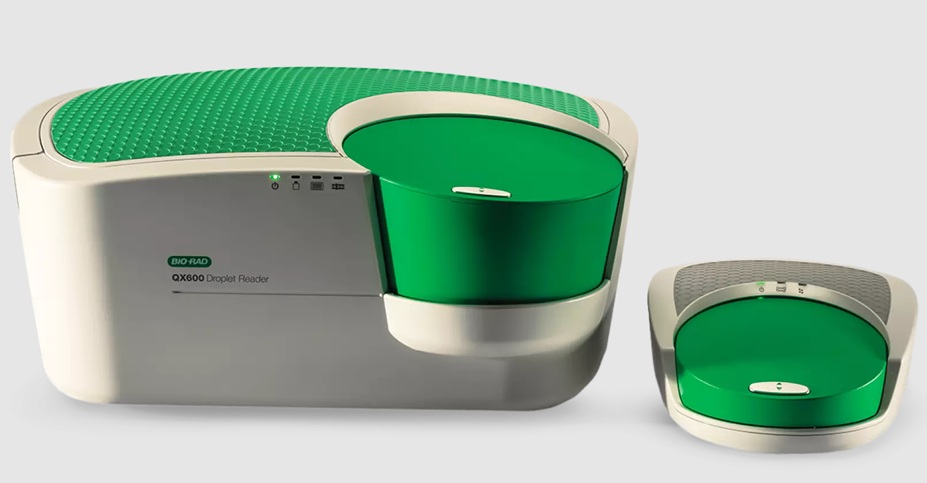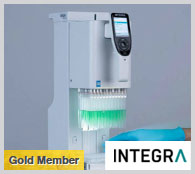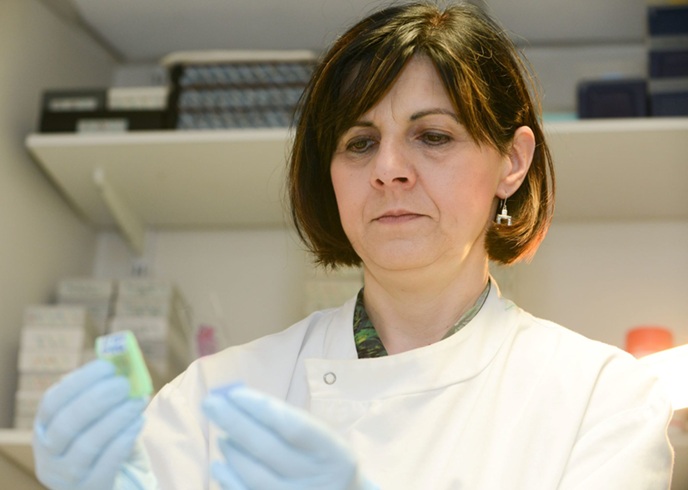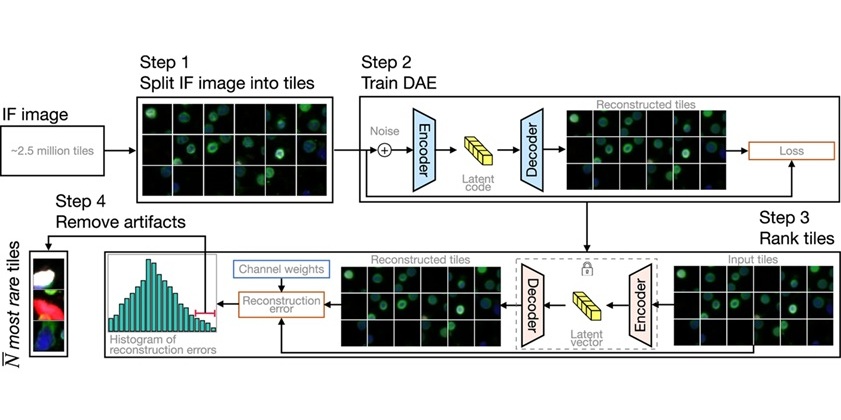Seasonal Temperature Impacts Patients’ Laboratory Results
|
By LabMedica International staff writers Posted on 23 Dec 2021 |
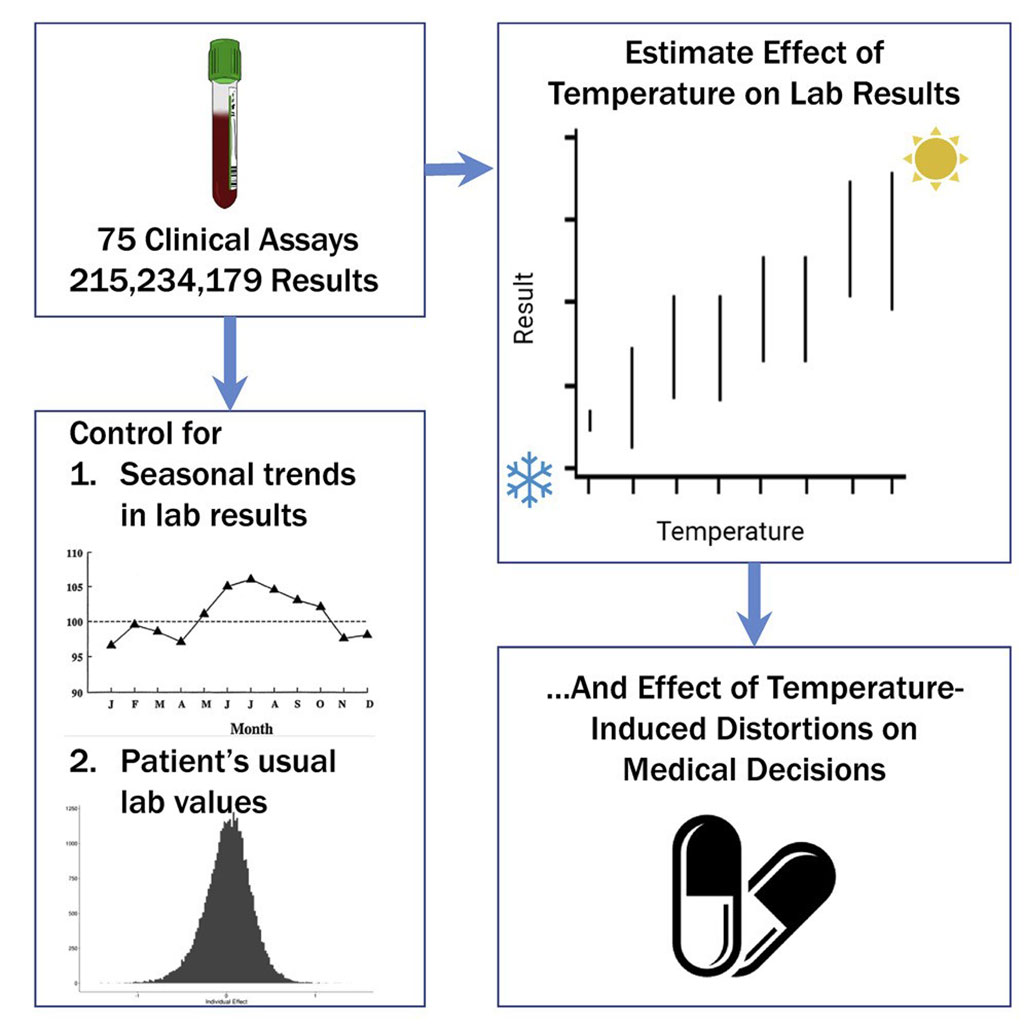
Image: Schematic graphics showing how variation in common laboratory test results caused by ambient temperature (Photo courtesy of Cell Press)
Every year, 13 billion laboratory tests are performed in the USA, nearly 800 million in the UK, and many more worldwide. Test results provide critical data on clinically important changes in patient physiology.
These test including acute variations in plasma volume, body temperature, circadian rhythms, but can also vary for more idiosyncratic reasons from one phlebotomy to the next, like differences in technique or sample processing. The effect of ambient temperature on the day blood is drawn has been explored.
Health scientists at the University of California, Berkeley (Berkeley, CA, USA) and from the University of Chicago (Chicago, IL, USA) analyzed a large dataset of test results from 2009 to 2015, spanning several climate zones. In a sample of more than four million patients, they modeled more than two million test results as a function of temperature. They measured how day-to-day temperature fluctuations affected results, over and above the patients’ average values, and seasonal variation. In the dataset were 4,877,039 individuals who had laboratory result data. Daily temperature ranges from a low of −28 °C (Fairbanks, AK, USA; February 16, 2011) to 49 °C (Yuma, AZ, USA; July 23, 2014).
The investigators reported that the results showed that temperature affected more than 90% of individual tests and 51 of 75 assays, are significantly affected by temperature, including measures of kidney function (increased creatinine, urea nitrogen, and urine specific gravity), cellular blood components (decreased neutrophils, erythrocytes, and platelets), and lipids (increased high-density lipoprotein [HDL] and decreased total cholesterol, triglycerides, and low-density lipoprotein [LDL]). These small, day-to-day fluctuations did not likely reflect long-term physiological trends. For example, lipid panels checked on cooler days appeared to suggest a lower cardiovascular risk, leading to almost 10% fewer prescriptions for cholesterol-lowering drugs called statins to patients tested on the coolest days compared to the warmest days, even though these results probably did not reflect stable changes in cardiovascular risk.
One practical implication of the study is that laboratories could statistically adjust for ambient temperature on the test day when reporting laboratory results. Doing so could reduce weather-related variability at a lower cost than new laboratory assay technology or investments in temperature control in transport vans. In practice, decisions on adjustment would need to be at the discretion of the laboratory staff and the treating physician, potentially on a case-by-case basis.
Ziad Obermeyer, MD is the Distinguished Associate Professor of Health Policy and Management and first author of the study, said, “The textbook way of thinking about medical investigation is bench to bedside. First, we come up with a hypothesis, based on theory, then we test it with data. As more and more big data comes online, like the massive dataset of laboratory tests we used, we can flip that process on its head: discover fascinating new patterns and then use bench science to get to the bottom of it. I think this bedside-to-bench model is just as important as its better-known cousin because it can open up totally new questions in human physiology.”
The authors concluded that ambient temperature affects the results of many laboratory tests. These distortions, in turn, affect medical decision-making. Statistical adjustment in reporting is feasible and could limit undesired temperature-driven variability. The study was published on December 10, 2021 in the new journal MED.
Related Links:
University of California, Berkeley
University of Chicago
These test including acute variations in plasma volume, body temperature, circadian rhythms, but can also vary for more idiosyncratic reasons from one phlebotomy to the next, like differences in technique or sample processing. The effect of ambient temperature on the day blood is drawn has been explored.
Health scientists at the University of California, Berkeley (Berkeley, CA, USA) and from the University of Chicago (Chicago, IL, USA) analyzed a large dataset of test results from 2009 to 2015, spanning several climate zones. In a sample of more than four million patients, they modeled more than two million test results as a function of temperature. They measured how day-to-day temperature fluctuations affected results, over and above the patients’ average values, and seasonal variation. In the dataset were 4,877,039 individuals who had laboratory result data. Daily temperature ranges from a low of −28 °C (Fairbanks, AK, USA; February 16, 2011) to 49 °C (Yuma, AZ, USA; July 23, 2014).
The investigators reported that the results showed that temperature affected more than 90% of individual tests and 51 of 75 assays, are significantly affected by temperature, including measures of kidney function (increased creatinine, urea nitrogen, and urine specific gravity), cellular blood components (decreased neutrophils, erythrocytes, and platelets), and lipids (increased high-density lipoprotein [HDL] and decreased total cholesterol, triglycerides, and low-density lipoprotein [LDL]). These small, day-to-day fluctuations did not likely reflect long-term physiological trends. For example, lipid panels checked on cooler days appeared to suggest a lower cardiovascular risk, leading to almost 10% fewer prescriptions for cholesterol-lowering drugs called statins to patients tested on the coolest days compared to the warmest days, even though these results probably did not reflect stable changes in cardiovascular risk.
One practical implication of the study is that laboratories could statistically adjust for ambient temperature on the test day when reporting laboratory results. Doing so could reduce weather-related variability at a lower cost than new laboratory assay technology or investments in temperature control in transport vans. In practice, decisions on adjustment would need to be at the discretion of the laboratory staff and the treating physician, potentially on a case-by-case basis.
Ziad Obermeyer, MD is the Distinguished Associate Professor of Health Policy and Management and first author of the study, said, “The textbook way of thinking about medical investigation is bench to bedside. First, we come up with a hypothesis, based on theory, then we test it with data. As more and more big data comes online, like the massive dataset of laboratory tests we used, we can flip that process on its head: discover fascinating new patterns and then use bench science to get to the bottom of it. I think this bedside-to-bench model is just as important as its better-known cousin because it can open up totally new questions in human physiology.”
The authors concluded that ambient temperature affects the results of many laboratory tests. These distortions, in turn, affect medical decision-making. Statistical adjustment in reporting is feasible and could limit undesired temperature-driven variability. The study was published on December 10, 2021 in the new journal MED.
Related Links:
University of California, Berkeley
University of Chicago
Latest Clinical Chem. News
- VOCs Show Promise for Early Multi-Cancer Detection
- Portable Raman Spectroscopy Offers Cost-Effective Kidney Disease Diagnosis at POC
- Gold Nanoparticles to Improve Accuracy of Ovarian Cancer Diagnosis
- Simultaneous Cell Isolation Technology Improves Cancer Diagnostic Accuracy
- Simple Non-Invasive Hair-Based Test Could Speed ALS Diagnosis
- Paper Strip Saliva Test Detects Elevated Uric Acid Levels Without Blood Draws
- Prostate Cancer Markers Based on Chemical Make-Up of Calcifications to Speed Up Detection
- Breath Test Could Help Detect Blood Cancers
- ML-Powered Gas Sensors to Detect Pathogens and AMR at POC
- Saliva-Based Cancer Detection Technology Eliminates Need for Complex Sample Preparation
- Skin Swabs Could Detect Parkinson’s Years Before Symptoms Appear
- New Clinical Chemistry Analyzer Designed to Meet Growing Demands of Modern Labs

- New Reference Measurement Procedure Standardizes Nucleic Acid Amplification Test Results
- Pen-Like Tool Quickly and Non-Invasively Detects Opioids from Skin
- Simple Urine Test Could Detect Multiple Cancers at Early Stage
- Earwax Test Accurately Detects Parkinson’s by Identifying Odor Molecules
Channels
Molecular Diagnostics
view channel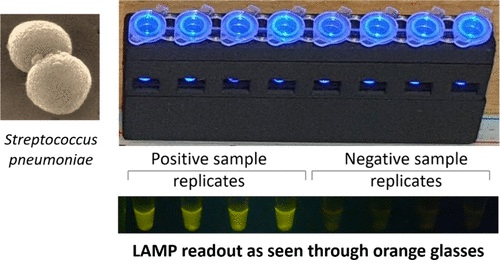
New Diagnostic Method Detects Pneumonia at POC in Low-Resource Settings
Pneumonia continues to be one of the leading causes of death in low- and middle-income countries, where limited access to advanced laboratory infrastructure hampers early and accurate diagnosis.... Read more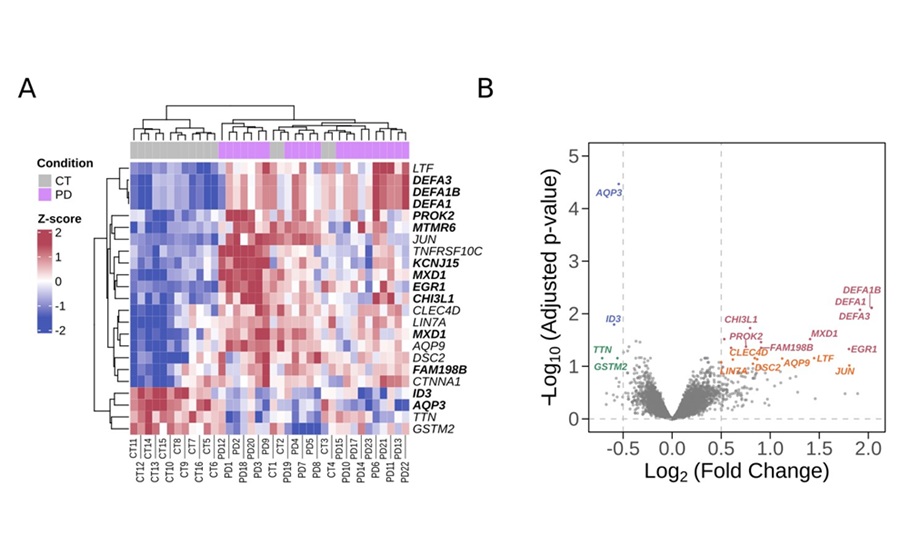
Blood Immune Cell Analysis Detects Parkinson’s Before Symptoms Appear
Early diagnosis of Parkinson’s disease remains one of the greatest challenges in neurology. The condition, which affects nearly 12 million people globally, is typically identified only after significant... Read moreHematology
view channel
ADLM’s New Coagulation Testing Guidance to Improve Care for Patients on Blood Thinners
Direct oral anticoagulants (DOACs) are one of the most common types of blood thinners. Patients take them to prevent a host of complications that could arise from blood clotting, including stroke, deep... Read more
Viscoelastic Testing Could Improve Treatment of Maternal Hemorrhage
Postpartum hemorrhage, severe bleeding after childbirth, remains one of the leading causes of maternal mortality worldwide, yet many of these deaths are preventable. Standard care can be hindered by delays... Read more
Pioneering Model Measures Radiation Exposure in Blood for Precise Cancer Treatments
Scientists have long focused on protecting organs near tumors during radiotherapy, but blood — a vital, circulating tissue — has largely been excluded from dose calculations. Each blood cell passing through... Read moreImmunology
view channel
Blood-Based Liquid Biopsy Model Analyzes Immunotherapy Effectiveness
Immunotherapy has revolutionized cancer care by harnessing the immune system to fight tumors, yet predicting who will benefit remains a major challenge. Many patients undergo costly and taxing treatment... Read more
Signature Genes Predict T-Cell Expansion in Cancer Immunotherapy
Modern cancer immunotherapies rely on the ability of CD8⁺ T cells to rapidly multiply within tumors, generating the immune force needed to eliminate cancer cells. However, the biological triggers behind... Read moreMicrobiology
view channel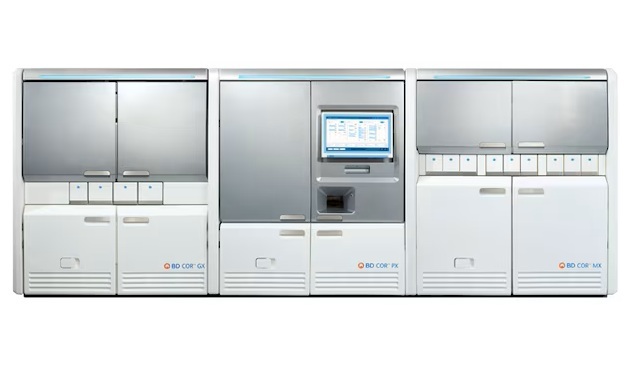
High-Throughput Enteric Panels Detect Multiple GI Bacterial Infections from Single Stool Swab Sample
Gastrointestinal (GI) infections are among the most common causes of illness worldwide, leading to over 1.7 million deaths annually and placing a heavy burden on healthcare systems. Conventional diagnostic... Read more
Fast Noninvasive Bedside Test Uses Sugar Fingerprint to Detect Fungal Infections
Candida bloodstream infections are a growing global health threat, causing an estimated 6 million cases and 3.8 million deaths annually. Hospitals are particularly vulnerable, as weakened patients after... Read morePathology
view channel
New Molecular Analysis Tool to Improve Disease Diagnosis
Accurately distinguishing between similar biomolecules such as proteins is vital for biomedical research and diagnostics, yet existing analytical tools often fail to detect subtle structural or compositional... Read more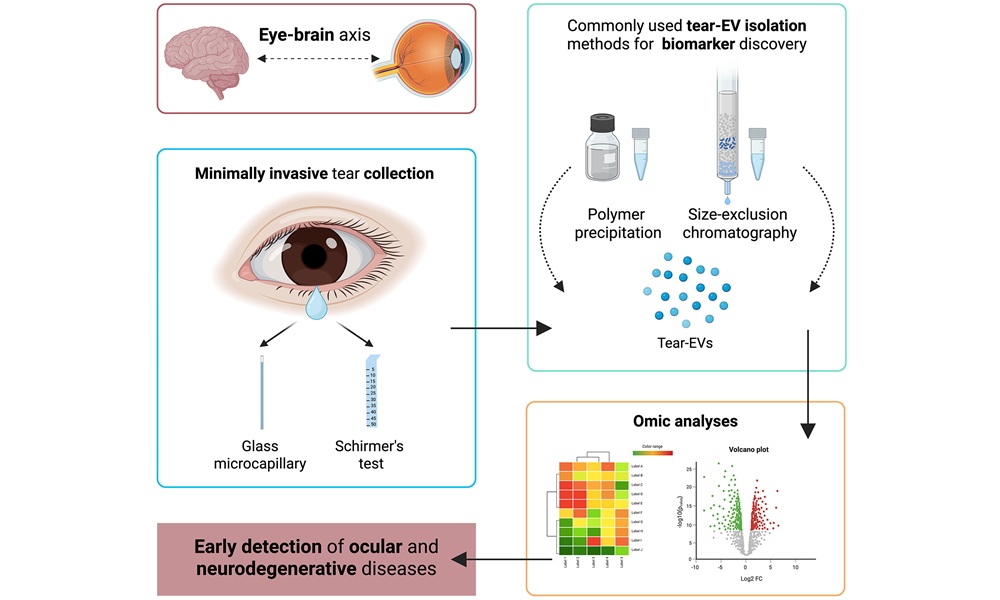
Tears Offer Noninvasive Alternative for Diagnosing Neurodegenerative Diseases
Diagnosing and monitoring eye and neurodegenerative diseases often requires invasive procedures to access ocular fluids. Ocular fluids like aqueous humor and vitreous humor contain valuable molecular information... Read moreTechnology
view channel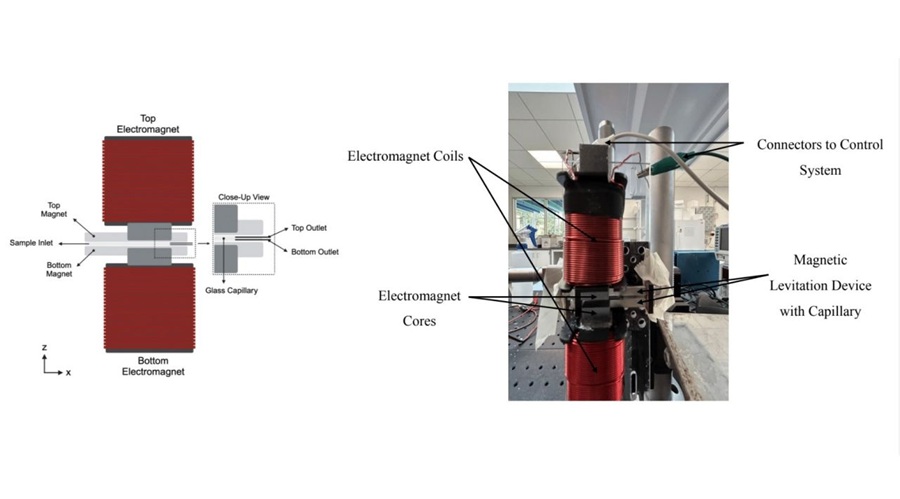
Cell-Sorting Device Uses Electromagnetic Levitation to Precisely Direct Cell Movement
Sorting different cell types—such as cancerous versus healthy or live versus dead cells—is a critical task in biology and medicine. However, conventional methods often require labeling, chemical exposure,... Read more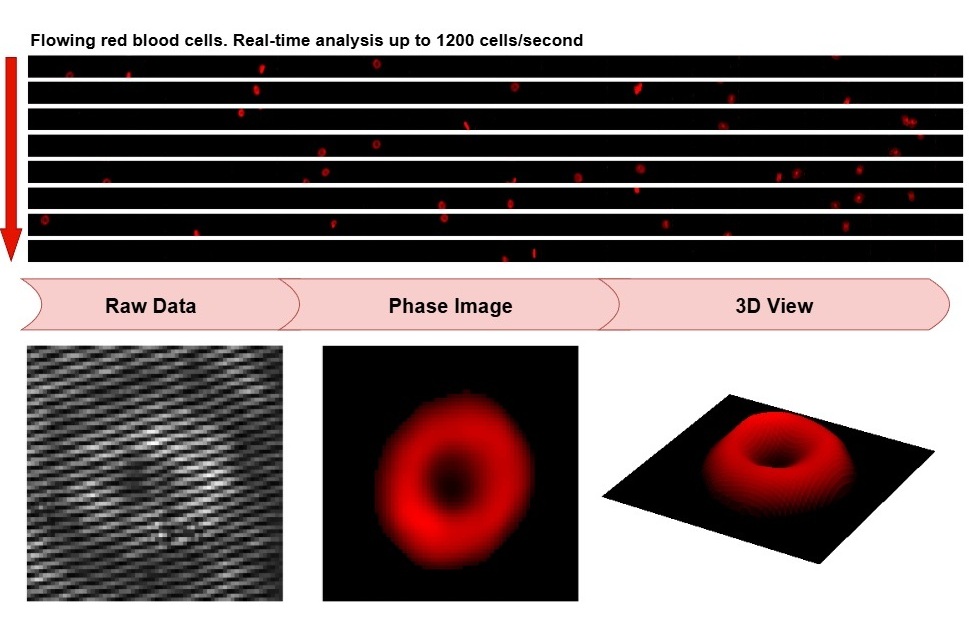
Embedded GPU Platform Enables Rapid Blood Profiling for POC Diagnostics
Blood tests remain a cornerstone of medical diagnostics, but traditional imaging and analysis methods can be slow, costly, and reliant on dyes or contrast agents. Now, scientists have developed a real-time,... Read moreIndustry
view channel
Qiagen Acquires Single-Cell Omics Firm Parse Biosciences
QIAGEN (Venlo, Netherlands) has entered into a definitive agreement to fully acquire Parse Biosciences (Seattle, WA, USA), a provider of scalable, instrument-free solutions for single-cell research.... Read more
Puritan Medical Products Showcasing Innovation at AMP2025 in Boston
Puritan Medical Products (Guilford, ME, USA), the world’s most trusted manufacturer of swabs and specimen collection devices, is set to exhibit at AMP2025 in Boston, Massachusetts, from November 11–15.... Read more
Advanced Instruments Merged Under Nova Biomedical Name
Advanced Instruments (Norwood, MA, USA) and Nova Biomedical (Waltham, MA, USA) are now officially doing business under a single, unified brand. This transformation is expected to deliver greater value... Read more